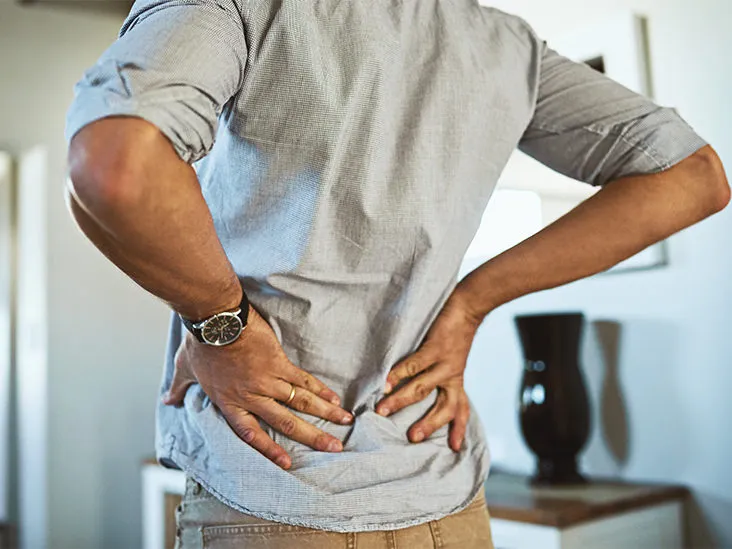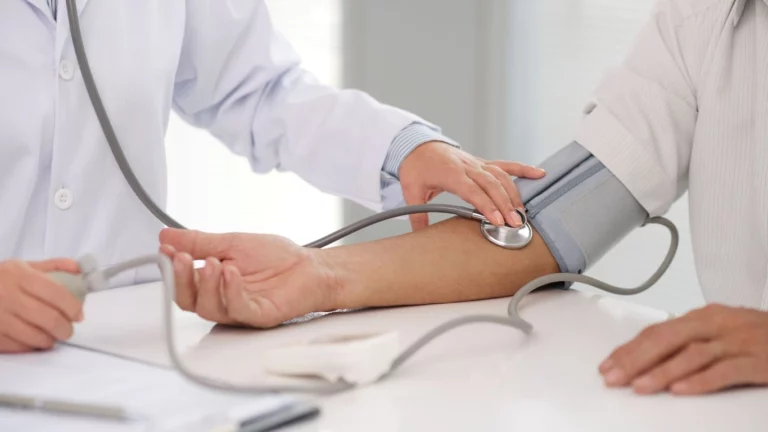Can Acid Reflux Cause Back Pain?
Learn about the potential link between acid reflux and back pain in this informative article. Discover the causes and symptoms of acid reflux, as well as the various factors contributing to back pain. Find out how acid reflux-related back pain happens and the importance of accurate diagnosis.
In this comprehensive article, we will explore the relationship between acid reflux and back pain in depth. Acid reflux is a common gastrointestinal condition that causes heartburn and discomfort, while back pain can be a result of various underlying issues. We’ll delve into the possible link between these two conditions and discuss ways to manage and prevent acid reflux-induced back pain.
Introduction
1.1 What is Acid Reflux?
Acid reflux, also known as gastroesophageal reflux disease (GERD), occurs when stomach acid flows back into the esophagus. This can happen due to a weakened lower esophageal sphincter, the muscular ring that separates the stomach from the esophagus. The condition often leads to a burning sensation in the chest (heartburn) and regurgitation of acidic contents into the mouth.
1.2 Understanding Back Pain
Back pain is a prevalent health issue that affects people of all ages. It can be acute or chronic, and its intensity may range from mild discomfort to severe agony. Back pain can stem from various factors, including muscle strains, spinal problems, and underlying medical conditions. Understanding the possible causes of back pain is essential to identify whether acid reflux is a contributing factor.
The Link Between Acid Reflux and Back Pain
2.1 Acid Reflux: Causes and Symptoms
Acid reflux occurs when the lower esophageal sphincter (LES) becomes weak or relaxed, allowing stomach acid to flow back into the esophagus. Several factors can contribute to this condition, including obesity, certain foods, smoking, and pregnancy. Symptoms of acid reflux can vary from mild to severe and may include heartburn, regurgitation, chest pain, difficulty swallowing, and a sour taste in the mouth.
2.2 Back Pain: Causes and Types
Back pain is a complex issue that can have various causes. One of the most common reasons is muscular strain, which can occur from lifting heavy objects, sudden movements, or poor posture. Spinal issues such as herniated discs, spinal stenosis, and sciatica can also lead to back pain. Furthermore, medical conditions like kidney stones or infections may refer pain to the back area. Properly diagnosing the root cause of back pain is essential to determine if acid reflux is involved in the discomfort.

Can Acid Reflux Cause Back Pain?
3.1 Acid Reflux-Related Back Pain: How it Happens
Although acid reflux primarily affects the upper gastrointestinal tract, it can indirectly contribute to back pain through a phenomenon called referred pain. The esophagus and the nerves that transmit pain signals from the upper body share common nerve pathways with the back. When acid reflux triggers irritation in the esophagus, it can radiate pain signals to the back, leading to discomfort and sometimes confusing the source of pain.
Research has shown that approximately 25% of acid reflux patients experience back pain as a symptom. The pain typically manifests between the shoulder blades and can be dull, aching, or sharp. However, it’s important to note that not all back pain is related to acid reflux, and healthcare professionals need to evaluate other potential causes of back pain to provide accurate treatment.
3.2 Identifying the Connection: Acid Reflux and Back Pain
Given the complexity of back pain and the various potential causes, identifying the specific connection to acid reflux can be challenging. Physicians will consider the patient’s medical history, conduct a physical examination, and order relevant diagnostic tests, including endoscopy and imaging studies, to rule out other conditions.
Additionally, it’s crucial for patients to communicate their symptoms accurately to their healthcare provider. Describing the nature, intensity, and location of both the back pain and acid reflux symptoms will assist in the diagnostic process.
Research published in the American Journal of Gastroenterology suggests that the use of 24-hour esophageal pH-impedance monitoring can be helpful in identifying gastroesophageal reflux (GER) as a possible cause of non-cardiac chest pain, including back pain. This diagnostic method allows for the detection of weakly acidic or non-acidic reflux episodes that may not be captured by traditional pH monitoring alone.

Other Possible Explanations for Back Pain
4.1 Muscular Strain and Back Pain
Muscular strain is one of the most common reasons for back pain and can occur due to overexertion, poor lifting techniques, or prolonged sitting or standing in improper positions. The muscles of the back can become tense and painful, leading to discomfort and reduced mobility. Patients experiencing back pain should consider whether recent physical activities or postural habits may be contributing to their symptoms.
Addressing muscular strain-related back pain often involves rest, gentle stretching exercises, and applying heat or cold packs to the affected area. Physical therapy and massages may also be beneficial in relieving muscle tension and promoting healing.
4.2 Spinal Issues and Back Pain
Problems with the spine can cause chronic and debilitating back pain. Common spinal issues include herniated discs, which occur when the soft, gel-like center of a spinal disc protrudes and puts pressure on nearby nerves. Spinal stenosis, a narrowing of the spinal canal, and sciatica, irritation of the sciatic nerve, can also lead to severe back pain.
Diagnosing spinal issues may involve imaging tests such as X-rays, MRI, or CT scans. Treatment options can range from conservative measures, such as physical therapy and pain management, to surgical interventions for more severe cases.
According to a study published in the European Spine Journal, the prevalence of back pain increases with age and is more common in women than in men. The research also found a correlation between body mass index (BMI) and the occurrence of back pain, suggesting that maintaining a healthy weight can help reduce the risk of spinal issues and back pain.

Managing Acid Reflux-Induced Back Pain
5.1 Treating Acid Reflux Effectively
To alleviate back pain caused by acid reflux, it’s crucial to manage the underlying GERD effectively. Lifestyle changes can play a significant role in reducing acid reflux symptoms. These changes may include:
- Dietary Modifications: Avoiding trigger foods such as spicy, acidic, or fatty items, as well as caffeine and alcohol, can help minimize acid reflux episodes. Incorporating more fruits, vegetables, and whole grains into the diet can support digestive health.
- Weight Management: For individuals who are overweight or obese, losing weight can help reduce the pressure on the stomach, preventing the backflow of acid into the esophagus.
- Eating Habits: Consuming smaller, more frequent meals instead of large meals can help prevent overloading the stomach and reduce the likelihood of acid reflux.
- Posture During Meals: Sitting upright while eating and avoiding lying down immediately after meals can aid in proper digestion and minimize acid reflux symptoms.
- Quitting Smoking: Smoking can weaken the LES and contribute to acid reflux, so quitting smoking is beneficial for both acid reflux and overall health.
- Elevating the Head of the Bed: Raising the head of the bed by about 6 to 8 inches can help prevent stomach acid from flowing back into the esophagus while sleeping.
5.2 Alleviating Back Pain Symptoms
While treating acid reflux addresses the root cause of back pain, there are also ways to manage the discomfort directly. Non-pharmacological approaches to alleviate back pain may include:
- Heat or Cold Therapy: Applying a heating pad or an ice pack to the affected area can help reduce inflammation and soothe back pain.
- Gentle Exercises: Engaging in low-impact exercises such as walking, swimming, or yoga can help strengthen the back muscles and improve flexibility, contributing to pain relief.
- Over-the-Counter Pain Relievers: For short-term relief, over-the-counter pain medications such as acetaminophen or non-steroidal anti-inflammatory drugs (NSAIDs) may be used as directed.
- Physical Therapy: A physical therapist can develop a personalized exercise plan and provide techniques to improve posture and alleviate back pain.
- Massage Therapy: Regular massages can help relax tense muscles and reduce pain in the back and other areas of the body.
- Mind-Body Techniques: Practices such as meditation and deep breathing exercises can help manage stress, which can contribute to back pain.
It’s crucial for individuals with persistent or severe back pain to consult with a healthcare professional before attempting any self-treatment methods. Healthcare providers can conduct a thorough evaluation to determine the underlying cause of the back pain and recommend appropriate interventions for relief.

Preventing Acid Reflux and Back Pain
6.1 Lifestyle Changes for Acid Reflux Prevention
Preventing acid reflux involves adopting a holistic approach to lifestyle habits. Some preventive measures include:
- Dietary Habits: Choosing a well-balanced diet rich in fruits, vegetables, and lean proteins while limiting the intake of trigger foods and beverages can help prevent acid reflux.
- Weight Management: Maintaining a healthy weight through regular exercise and a balanced diet can reduce the risk of acid reflux and associated back pain.
- Eating Patterns: Eating smaller, more frequent meals throughout the day, rather than three large meals, can aid in digestion and minimize the chances of acid reflux.
- Avoiding Late-Night Eating: Refraining from eating at least two to three hours before bedtime can prevent nighttime acid reflux episodes.
- Posture and Clothing: Maintaining good posture during meals and avoiding tight-fitting clothing can reduce pressure on the abdomen and lower the risk of acid reflux.
- Stress Management: Practicing relaxation techniques, such as meditation, yoga, or mindfulness exercises, can help manage stress levels and minimize acid reflux triggers.
- Avoiding Tobacco and Alcohol: Quitting smoking and limiting alcohol consumption can benefit overall health and reduce the risk of acid reflux.
6.2 Exercises and Practices for Back Pain Prevention
Preventing back pain involves maintaining a healthy spine and strong back muscles. Some exercises and practices that can contribute to back pain prevention include:
- Core Strengthening Exercises: Strengthening the core muscles through exercises like planks, bridges, and abdominal crunches can support the back and reduce the risk of strain.
- Stretching Exercises: Regular stretching, particularly for the hamstrings and hip flexors, can improve flexibility and alleviate pressure on the lower back.
- Yoga and Pilates: Participating in yoga or Pilates classes can promote better posture, flexibility, and core strength, contributing to back health.
- Proper Lifting Techniques: Learning and practicing proper lifting techniques can help prevent muscle strains and injuries.
- Maintaining Good Posture: Being mindful of posture during daily activities, such as sitting, standing, and walking, can reduce stress on the spine and minimize the risk of back pain.
- Ergonomic Workspaces: Ensuring that workspaces are ergonomically designed can help maintain good posture and reduce the strain on the back during extended periods of sitting.
It’s important to approach back pain prevention holistically and adopt a combination of exercises, lifestyle changes, and practices to achieve optimal results. Consulting with a healthcare or fitness professional can provide personalized guidance on effective preventive measures.

When to Seek Medical Advice
7.1 Signs of Serious Acid Reflux Complications
While occasional acid reflux is common and manageable, persistent or severe symptoms may indicate complications that require medical attention. Some signs of serious acid reflux complications include:
- Difficulty Swallowing: If acid reflux leads to difficulty swallowing or a sensation of food getting stuck in the throat, it may indicate a narrowing of the esophagus (stricture) or other complications.
- Chronic Cough or Wheezing: Long-term acid reflux can irritate the airways and lead to chronic cough or wheezing.
- Esophagitis: Inflammation of the esophagus due to frequent exposure to stomach acid can cause chest pain, difficulty swallowing, and bleeding.
- Barrett’s Esophagus: A precancerous condition characterized by changes in the cells lining the esophagus, which can increase the risk of esophageal cancer.
- Respiratory Symptoms: Acid reflux can cause or worsen respiratory issues such as asthma or pneumonia, particularly in individuals with pre-existing lung conditions.
If any of these symptoms occur, or if over-the-counter medications do not provide relief, it’s essential to seek medical attention promptly to prevent potential complications and receive appropriate treatment.
7.2 When Back Pain Requires Medical Attention
Back pain that is severe, persistent, or accompanied by other concerning symptoms warrants medical evaluation. Some indications that back pain requires medical attention include:
- Fever or Chills: If back pain is accompanied by fever or chills, it may indicate an underlying infection or inflammatory condition.
- Loss of Bowel or Bladder Control: Severe back pain accompanied by a loss of bowel or bladder control requires immediate medical attention, as it could be a sign of a serious spinal issue.
- Numbness or Weakness: If back pain is associated with numbness, tingling, or weakness in the legs or arms, it may indicate nerve compression or damage.
- Unexplained Weight Loss: Unintended weight loss along with back pain may be a sign of an underlying medical condition that requires investigation.
- History of Cancer: Individuals with a history of cancer should be particularly vigilant if experiencing new or worsening back pain, as it could be related to metastases or other cancer-related issues.
Receiving a prompt and accurate diagnosis from a healthcare professional is crucial to identify and treat the underlying cause of back pain effectively.
Conclusion
In conclusion, while acid reflux primarily affects the digestive system, it can indirectly contribute to back pain due to referred pain. The relationship between acid reflux and back pain requires careful evaluation by healthcare professionals to determine if acid reflux is a contributing factor. By understanding the causes and symptoms of acid reflux and back pain, adopting preventive measures, and seeking medical advice when necessary, individuals can improve their overall well-being and minimize the impact of these conditions on their lives.
Ultimately, a holistic approach that includes lifestyle changes, preventive measures, and appropriate medical interventions can lead to better management and prevention of both acid reflux and back pain.
Appendices
References
- Vakil N, van Zanten SV, Kahrilas P, Dent J, Jones R; Global Consensus Group. The Montreal definition and classification of gastroesophageal reflux disease: a global evidence-based consensus. Am J Gastroenterol. 2006;101(8):1900-20. doi: 10.1111/j.1572-0241.2006.00630.x.
- Saberi-Firoozi M, Khademolhosseini F, Yousefi M, Mehrabani D, Zare N, Heydari S. Association of gastroesophageal reflux disease symptoms with exacerbations of chronic obstructive pulmonary disease. Saudi Med J. 2009;30(10):1316-20.
- Chou JW, Chang WC, Lin CS, et al. Is non-cardiac chest pain related to gastroesophageal reflux disease? J Chin Med Assoc. 2008;71(4):184-8. doi: 10.1016/S1726-4901(08)70056-1.
- American College of Gastroenterology. (2021). Heartburn, GERD, and Acid Reflux. Retrieved from https://www.ncbi.nlm.nih.gov/pmc/articles/PMC8754510/
FAQs
Q1: Can acid reflux cause back pain?
A: While acid reflux primarily affects the upper gastrointestinal tract, it can indirectly contribute to back pain due to referred pain. Approximately 25% of acid reflux patients experience back pain as a symptom.
Q2: How can I manage acid reflux-induced back pain?
A: Managing acid reflux effectively is essential. Lifestyle changes such as dietary modifications, weight management, and elevating the head of the bed can help. Additionally, exercises, heat or cold therapy, and over-the-counter pain relievers can alleviate back pain symptoms.
Disclaimer
The information provided in this article is for informational purposes only and should not be considered a substitute for professional medical advice. Always consult with a qualified healthcare provider for accurate diagnosis and personalized treatment options. The author and publisher of this article are not liable for any medical decisions made based on the content provided herein.

Camellia Wulansari is a dedicated Medical Assistant at a local clinic and a passionate health writer at Healthusias.com. With years of hands-on experience in patient care and a deep interest in preventive medicine, she bridges the gap between clinical knowledge and accessible health information. Camellia specializes in writing about digestive health, chronic conditions like GERD and hypertension, respiratory issues, and autoimmune diseases, aiming to empower readers with practical, easy-to-understand insights. When she’s not assisting patients or writing, you’ll find her enjoying quiet mornings with coffee and a medical journal in hand—or jamming to her favorite metal band, Lamb of God.







